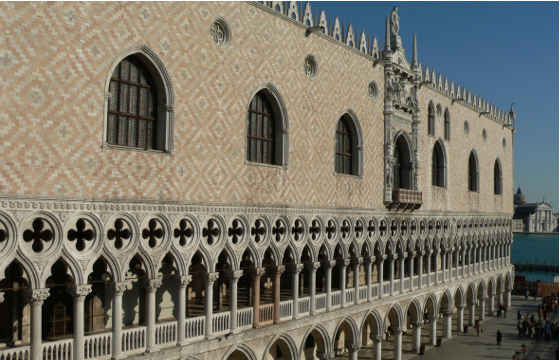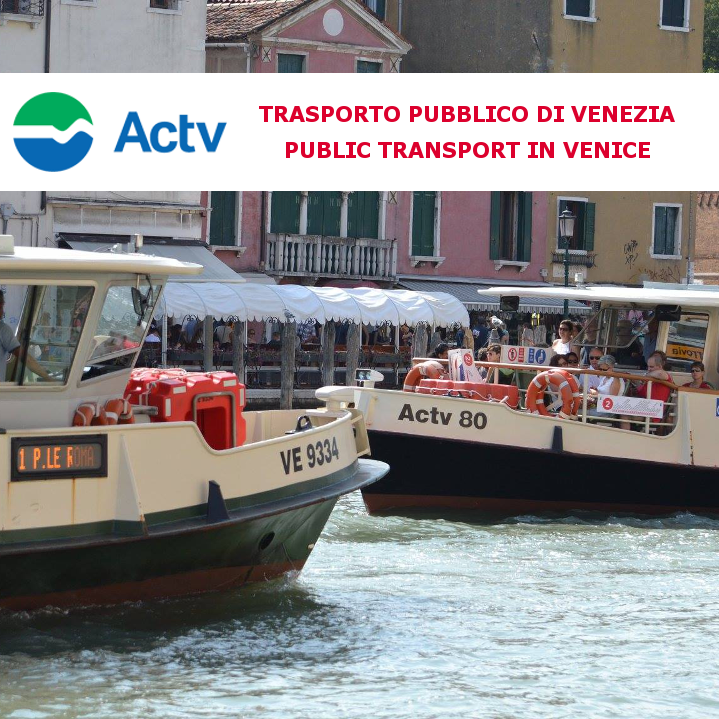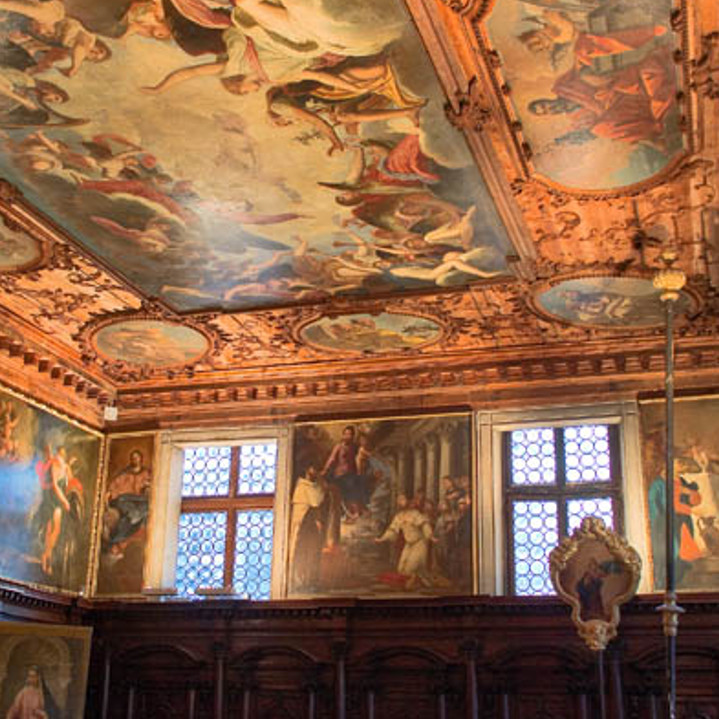You are here
The Marciana Area
INTRODUCTION TO VENICE: THE MARCIANA AREA
1st Itinerary
 Everyone coming to Venice for the first time will visit the Marciana area so here are some suggestions on what to see in this district, dense in history, monuments and museums. We recommend making an early start to allow time to see the sights and understand the evolution of the architectural.
Everyone coming to Venice for the first time will visit the Marciana area so here are some suggestions on what to see in this district, dense in history, monuments and museums. We recommend making an early start to allow time to see the sights and understand the evolution of the architectural.
St. Mark’s Square was conceived as an extension of the zone of the Basilica and Doge’s Palace as a public place for the traditions of the Serenissima Republic’s civil and religious life. As well as extending around the square along its perimeter with the Procuratie Vecchie on the right of the Basilica and the Procuratie Nuove on the left, a key feature of the square is its imposing bell tower, the original functions of which were of watchtower and lighthouse. The main section, which was rebuilt the first time in 1100, was substantially rebuilt in 1517 respecting the original structure, adapting the exterior facings to the Renaissance style. Above this, closed by an attic, is the spire at 96 meters above the square, with its huge golden angel weather-vane. In 1902 the tower collapsed down upon itself, miraculously without causing damage or injury, and was rebuilt within a decade. At its base, facing the Basilica, is the Loggia, a beautiful sculptural and architectural complex, designed by Sansovino in 1537 as a triumphal arch. Another characteristic of the square is the Torre dell’Orologio or clock tower (reductions when booking with the Rolling Venice card), which was designed and begun by Mauro Codussi in 1496 on commission from the Procurators of St. Mark. This tower gives importance to the semi-concealed entrance to the Mercerie, Venice’s bustling pedestrian artery and leading shopping zone, which connects the areas of the Marciana and Rialto. It has always been characterized by its fascinating botteghe or family-run shops that, during the height of the Serenissima, would stay open at night to sell valuable cloths, velvets, spices and silks from the Orient. Of the immense heritage in the immediate vicinity, we must mention the Square’s two main monuments: the Basilica and the Doge’s Palace.
The city’s spiritual centre, the Basilica, stands at the broader end of St. Mark’s Square. The original church was founded in 829 to preserve and venerate the relics of St. Mark. Today’s Basilica is the third reconstruction and dates back to 1063 with subsequent works (the narthex), modernizations and embellishments (the precious multi-colored marbles). No visit would be complete without taking in the front façade with its five monumental entrance portals and the terrace that runs along its full length, above which was installed a beautiful chariot as booty from the victorious expedition of the Fourth Crusade in 1204 (the original horses are inside St. Mark’s museum). All that remains of the exterior mosaics is the catino (basin) of St. Alipio (left portal), depicting an image of the thirteenth-century Basilica. The other portals are decorated with sixteenth and seventeenth-century re-workings of older mosaics. Of the two side façades, the one facing the Bacino or waterfront is worth noting. It was once the main sea-facing entrance and has two pillars in front of it to assign it importance. At the corner joining the Doge’s Palace is the beautiful Tetrarchs sculpture, a porphyry sacked from a Byzantine palace in 1204. In the large hall or narthex, above the marble decoration is a valuable mosaic dated at between 1230 and 1275, depicting stories from the Old Testament. Inside the church, as well as looking up to the precious wall decoration, you must also take in the splendid floor, with its complex geometric pattern dating from the eleventh and twelfth centuries. The Basilica is arranged on the plan of a Greek cross although the lengthening of its central axis ending in the apse gives the feeling that the cross is instead Latin. The mosaic cycle was begun in 1100 and completed before 1200. The chapels were decorated in the subsequent century while the Mascoli chapel was completed in 1400 and the New Sacristy was a work of the early sixteenth century. Inside the Basilica, you can visit (entrance fee) the Pala d’Oro, a precious golden altarpiece by Venetian-Byzantine goldsmiths, and the remarkable St. Mark’s museum.
The second recommendation of this trip to Venice’s heart is the Doge’s Palace (entrance concession with Rolling Venice card), since ancient times the traditional private residence of the Doge, the seat of the Government and main Magistracies, and that of the Palace of Justice. Tradition has it that a turreted castle was built on this site when the Doge’s official seat was moved from Malamocco to the Rialto islands in 810. Surrounded by water and facing seawards, the castle was where the most powerful figure of the Venetian State lived and made the laws. That building was set afire and destroyed during the citizens’ revolt against Doge Candiano the Fourth at the end of the tenth century. After restoration, it was again burned down, in 1106. In 1173 Doge Sebastiano Ziani - who it was said took over a city of bricks and left a city of marble - began building a new structure, made up of two separate units. This construction underwent radical changes starting in 1340, when the wing facing the Basin was built to host the immense hall of the Great Council. The wing is a masterpiece of Gothic architecture which allowed Venice’s architects and stone-workers to leave their innovative mark, and where brilliant decisions of engineering dealt with the weight of the enormous wall above while also solving the not-inconsequential question of statics (the line of columns and pillars allowed the weight of the huge hall to be unloaded groundwards in a balanced way. The decorative efforts were particularly concentrated on the central great window, an admirable work of florid Gothic style. The design was received so well that it was re-adopted a century later when it was decided to complete the Palazzo towards the Piazzetta, the result being the wholly uniform structure we see today. Among other assignments, the Bon family of renowned stone masons was entrusted with decorating the representational entrance adjacent to the Basilica: the “Paper Door”, thus entitled as it was used for posting announcements for public bids. As one of the finest examples of Venetian Gothic sculpture of the later fifteenth century, the portal is surmounted by statues of Justice and St. Mark, flanked by the four virtues. On the architrave is a portrait of Doge Foscari kneeling in front of the Republic’s symbolic lion. Walking beneath the Foscari arch, we come to the splendid Giants’ Staircase, a grandiose Renaissance work by Antonio Rizzo, at the top of which the just-elected Doge swears allegiance to the Serenissima, between the imposing statues of Mars and Neptune. The Foscari arch ends opposite the stairs with the bronze copies of Adam and Eve, the originals by Rizzo being on show inside the Palace.
The wing of the building onto which the Giants’ Staircase rests is from Renaissance times and was completed in the early 1600s. The broad, harmonious courtyard is decorated by two bronze well-heads dating from the late 1500s. All the citizens could freely draw water from the wells. As a symbol and place of politics and justice, the Palace was a building open to all, who could enter without fear. For centuries the doors were indeed not locked at night, thus affording hospitality to pilgrims and the needy. Beyond the court of the Senators, climbing the staircase of the same name to the far left, is the first loggia from the centre, from which rises the entrancing Golden Staircase (designed by Jacopo Sansovino and completed by Scarpagnino), which was the entrance of honour to the Doge’s quarters and to the halls of the Government. The white and gold stuccoes are the work of Alessandro Vittoria while the frescoes are by Battista Franco. Through the square hall we reach the halls of the Government and the main Magistracies, which can be visited today. All are richly decorated with splendid golden wooden frames containing some masterpieces of Venetian painting, including those by Titian, Veronese, Bassano, Palma il Giovane and Tiepolo. The works dating from before the second half of 1500 were completely destroyed by the devastating of 1574 and 1577. The stories narrated in the works portray the Republic’s origins, history, significant battles and diplomatic victories, using allegories to exalt its good Government and wise justice. The halls of the Maggior Consiglio (Great Council) and Scrutinio (voting hall) also contain the complete collection of portraits of the Doges.
well-heads dating from the late 1500s. All the citizens could freely draw water from the wells. As a symbol and place of politics and justice, the Palace was a building open to all, who could enter without fear. For centuries the doors were indeed not locked at night, thus affording hospitality to pilgrims and the needy. Beyond the court of the Senators, climbing the staircase of the same name to the far left, is the first loggia from the centre, from which rises the entrancing Golden Staircase (designed by Jacopo Sansovino and completed by Scarpagnino), which was the entrance of honour to the Doge’s quarters and to the halls of the Government. The white and gold stuccoes are the work of Alessandro Vittoria while the frescoes are by Battista Franco. Through the square hall we reach the halls of the Government and the main Magistracies, which can be visited today. All are richly decorated with splendid golden wooden frames containing some masterpieces of Venetian painting, including those by Titian, Veronese, Bassano, Palma il Giovane and Tiepolo. The works dating from before the second half of 1500 were completely destroyed by the devastating of 1574 and 1577. The stories narrated in the works portray the Republic’s origins, history, significant battles and diplomatic victories, using allegories to exalt its good Government and wise justice. The halls of the Maggior Consiglio (Great Council) and Scrutinio (voting hall) also contain the complete collection of portraits of the Doges.





